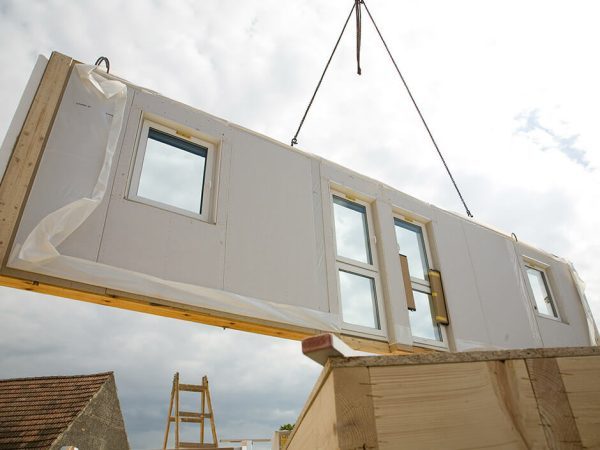Significant advancements in the realm of wall panels, a field within commercial construction, have unfolded over the years.
Once predominantly fashioned from traditional materials such as wood and concrete; these panels now integrate innovative solutions that not only improve efficiency but also elevate sustainability – all while enhancing aesthetics for modern building projects.
Introduction to Wall Panel
A broader trend towards prefabrication, modularity, and efficiency in the commercial construction industry manifests itself through the evolution of wall panels.
Traditional methods required on-site assembly of walls using individual components; however, modern wall panels are frequently prefabricated off-site—this allows for swifter installation procedures and enhances quality control.
The construction process has undergone a revolution due to this shift; it empowers builders to streamline their operations and deliver projects with heightened efficiency.
Incorporating Innovative Materials
The use of innovative materials, offering superior performance and durability, represents a significant advancement in wall panel construction.
Modern wall panels can now incorporate not only traditional options like wood and concrete but also include materials such as steel, aluminum fiberglass, and composite materials.
These provide enhanced strength along with resistance to moisture, fire thermal insulation; consequently ideal for an extensive array of commercial applications.
Enhancing Efficiency with Prefabrication
Emerging as a game-changer in commercial construction, prefabricated wall panels offer numerous advantages over traditional methods. Builders can optimize the construction process, minimize waste and reduce labor costs by fabricating these walls off-site within controlled environments.
Moreover, they achieve greater precision and consistency in panel dimensions and finishes through prefabrication which guarantees an elevated quality end product.
Sustainability and Green Building
Growing environmental concerns have prompted a shift in commercial construction, making sustainability a paramount consideration. Wall panels significantly contribute to these green building initiatives by providing opportunities for enhancing energy efficiency, reducing waste and mitigating environmental impact.
Materials like recycled steel, reclaimed wood and low-emission composites—which are sustainable wall panel options—aid buildings in attaining LEED certification along with other rigorous green building standards.
Meeting Regulatory Standards
A myriad of regulatory standards and building codes govern the construction of walls, necessitating compliance from commercial construction projects. These requirements pertain to structural integrity, fire resistance, acoustic performance and energy efficiency that wall panels must meet specific criteria for.
Moreover; in certain commercial settings such as warehouses or secure buildings where high-impact forces are prevalent – design specifications often call for imp walls which are robust barriers tailored to withstand such rigorous pressures.
Innovations in Design and Functionality
Advancements in technology and manufacturing techniques expand the design possibilities for wall panels in commercial construction: architects, designers can now access a broad spectrum of customizable options.
These include – but are not limited to – textured finishes; decorative patterns; integrated features such as built-in lighting, acoustics or insulation. Such innovations foster greater creativity and flexibility within building design–they empower architects to realize their vision while simultaneously fulfilling functional prerequisites.
Addressing Structural and Safety Needs
In commercial buildings, wall panels actively provide crucial structural support and safety. They bear vertical loads, resist lateral forces; furthermore may incorporate features–such as fire-resistant coatings, impact-resistant materials or seismic reinforcement: these enhancements significantly bolster building resilience and occupant safety.
This significance amplifies in high-risk environments; specifically areas susceptible to natural disasters.
Case Studies and Success Stories
Advanced wall panel systems in commercial construction demonstrate their effectiveness and benefits across the globe through numerous examples. Prefabricated wall panels, from high-rise office towers to industrial warehouses and retail complexes, accelerate construction timelines; reduce costs; and deliver sustainable resilient buildings.
Architects, builders, and developers seeking to leverage the latest advancements in wall panel technology can draw inspiration from case studies that highlight successful projects.
Progress in material science, digital fabrication, and automation is set to revolutionize wall panel usage in commercial construction.
These advancements promise to enhance the design, construction, and performance of wall panels, making it vital for industry stakeholders to engage with these technologies.
Doing so will lead to the construction of intelligent buildings that are safer, able to withstand various threats, and more sustainable, thus lessening their environmental footprint.
Also Read
Mass timber reduces construction’s carbon footprint, but introduces new risks
The impact of metal finishes in retail construction design

